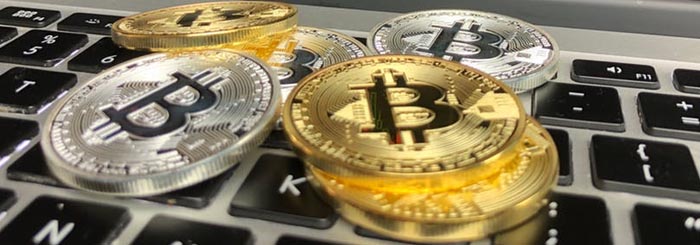Unless you have been living under a rock, you probably have heard about Bitcoin. Depending on your sources or sources, you may have either a negative or positive perception about the new kid on the block. Bitcoin has been around for a decade now and in that time, has caused a lot of farce, and for good reason.
Launched back in 2009, bitcoin was retailing for $1 on April 2011, just two years later. In December 2017, the price of a single bitcoin rose to an all-time high of $20,000.
Between these dates, which we have chosen for simplicity purposes, Bitcoin appreciated by a factor of 20,000. A small investment of $500 would have netted you about $10 million in six years.
Following this meteoric rise, Bitcoin attracted a lot of attention and uninformed investors who, after joining the bandwagon, saw the price of the coin fall by over 80%.

It is easy to see why bitcoin is such a polarizing asset and technology. The few people who chanced to come across the technology in its formative years are probably rich while the many who discovered it later probably lost a significant portion of their investment and do not want anything to do with the asset.
Whichever camp you fall into, it is good to acknowledge that bitcoin has almost single-handedly caused a revolution. There is an entire ecosystem that has sprouted based on the blockchain technology that Bitcoin started a decade ago.
Heavily dependent on the precursor internet revolution, the bitcoin revolution is making some bold promises including decentralization, accountability, integrity, immutability, security, and freedom. Freedom from third parties, freedom from government intervention and freedom to choose.
Monetary sovereignty is perhaps the most impactful freedom that any individual could ask for and that is what bitcoin was created to offer.
Satoshis Nakamoto, a pseudonymous individual(s), released the bitcoin whitepaper back in 2018 titled Bitcoin: A Peer to Peer Electronic Cash System. The idea behind bitcoin was not novel. That was creating internet money.

Several computer scientists and scholars had attempted to create a version of internet money but failed.
Bitcoin introduced one piece of the puzzle that made it work and that is the blockchain – a distrusted ledger existing on all nodes on the bitcoin network on which all transactions on the network are recorded.
The blockchain is cryptographically secured, tamper-proof and its creation is dependent on all nodes coming into a consensus.
That last bit is what differentiates all money from cryptocurrencies. Consensus is an absolutely essential part of bitcoin that it has also been copied and adapted by all other blockchain currencies following bitcoin.
And with this single innovation, the existence of the global financial structure is now threatened.
As bitcoin becomes more popular, more merchants are looking to accept payments in the cryptocurrency and once a significant portion of the world population goes online, Bitcoin is poised to become an important player in the payments business on the internet.
It is this thought that is now forcing governments to rethink their role as the issuers of official fiat currencies.
However, even with Bitcoin’s promising future, so far, the coin has found little use-cases other than speculation. As highlighted above, the price of Bitcoin has appreciated by a significant margin.
The most popular application at this stage of bitcoin is speculative trading, which is arguably responsible for most of the price action. So the remainder of this article, we will turn our attention to bitcoin trading, its evolution and portability.
Bitcoin Trading

Trading bitcoin is much like any form of traditional trading activity including trading forex and stocks.
Applies more or less the same principles and processes and just like these other forms of trading is largely based on speculation.
And before we head on, further along, we will be remiss if we didn’t remind you that any investment in a virtual asset such as bitcoin or any of its other several siblings is a risky investment. There is a big chance that you will lose the entirety of your investment.
Trading bitcoin is simple. It has the best liquidity of any cryptocurrency asset and almost all if not all trading platforms support bitcoin.
However, there are two disciplines that will be essential to advising most of the decisions that you will make as a bitcoin trader and those are technical and fundamental analysis.

Technical analysis (TA) involves using price action analysis techniques to predict future price action. Such methods include using charting techniques to try and predict future price movements.
Popular methods such as using candlesticks and bar charts, trends, support and resistance levels, RSI, EMA, etc are extremely useful when analyzing the bitcoin price movements.
Knowledge of this field is essential and we recommend that you educate yourself before beginning to trade bitcoin.
The fundamental aspects are a bit more challenging to master. The fundamentals of bitcoin involve analyzing the network and the community. As a technology, this is especially very important.
To trade effectively based on the fundamentals of bitcoin will require a sound understanding of the bitcoin network such as miners, developers, bitcoin use-cases and the general sentiment of engaging with bitcoin.

For instance, fundamental traders were able to predict the fall of the price of bitcoin prior to the split in the bitcoin community back in 2017 and in 2018 when, in both instances, the bitcoin blockchain split to form two competing chains. The uncertainty that is caused during this period often causes the price of the coin to fall.
When it comes to bitcoin profitability, it is hard to generalize as this figure is mostly determined by the market as well as the experience of the bitcoin trader.
Bitcoin is wildly volatile and this gives fewer traders – usually the experienced ones – an advantage to make huge profits. Newer traders, on the other hand, are less experienced and more prone to missing trading signals and therefore either lose their funds or fail to make much.
However, learning to trade bitcoin is a great experience with the promise of massive gains.
Press releases published by Crypto Economy have sent by companies or their representatives. Crypto Economy is not part of any of these agencies, projects or platforms. At Crypto Economy we do not give investment advice and encourage our readers to do their own research. If you believe that any of our press releases may contain erroneous or fraudulent information let us know through [email protected].









